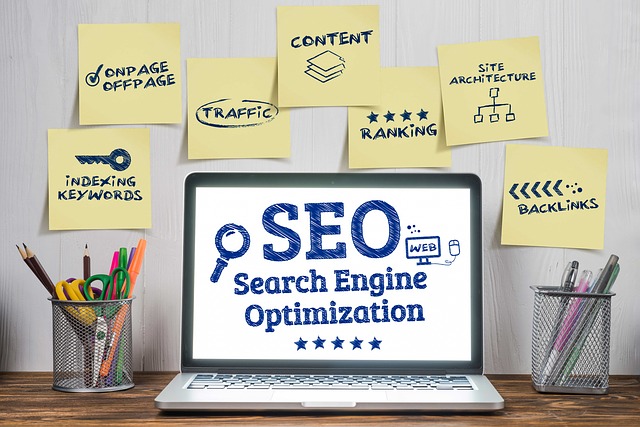
A website is often the first point of contact between your business and potential customers. Ensuring that it ranks well on search engine results pages (SERPs) is paramount for attracting organic (unpaid) traffic and establishing your online presence. Yet, a critical mistake that many organisations make is neglecting on-page optimisation during the website launch phase.
In this article, we’ll dive into the real-world consequences of failing to perform these elements and the profound impact it can have on search engine rankings, web traffic, and overall online visibility.
The essence of on-page optimisation
Before we explore the ramifications of neglecting on-page optimisation, it’s crucial to understand what it entails. The term refers to the practice of fine-tuning various elements on individual web pages to improve their visibility and ranking on search engines. These elements include, but are not limited to:
Keyword Optimisation: Incorporating relevant keywords naturally into your content, titles, headings, and meta tags to align with user search queries.
High-quality content: Creating valuable, informative, and engaging content that satisfies user intent and provides solutions to their queries.
Meta tags: Crafting compelling and accurate meta titles and descriptions that entice users to click on your search result.
Header tags: Structuring content with proper header tags (H1, H2, H3, etc.) to enhance readability and keyword relevance.
Image optimisation: Optimising images with descriptive alt text and appropriate file sizes for faster loading times.
Internal Linking: Creating a logical internal linking structure to guide users and search engines through your site’s content.
Mobile Responsiveness: Ensuring that your website is responsive and user-friendly on mobile devices.
Now that we have clarified what’s involved, let’s delve into the consequences of neglecting these critical elements.
Real-World Consequences
The companies named below are fictitious, they are simply being used as examples to illustrate points that can commonly go wrong in search engine optimisation (SEO) strategies.
- Plummeting search engine rankings: Sarah’s Boutique
Sarah’s Boutique, a small online clothing store, invested heavily in the design and aesthetics of their new website but overlooked on-page SEO. They didn’t perform keyword research or optimise their product descriptions and category pages.
The consequence: when potential customers searched for “women’s dresses online,” Sarah’s Boutique was nowhere to be found on the first few pages of search results. As a result, their website received very little organic traffic, and sales dwindled.
Neglecting on-page optimisation can cause your website to be pushed to the outskirts of search engine rankings. Google’s algorithms are designed to reward websites that offer valuable content and a seamless user experience. When you fail to optimise, you miss out on opportunities to signal to search engines that your website is relevant and valuable to users.
- Poor user experience: TechEase Solutions
TechEase Solutions, a tech support company, launched a new website that was visually appealing but lacked well-organised content and clear navigation. Users found it challenging to locate information about their services and contact details.
The consequence: frustrated visitors quickly departed the site, resulting in high bounce rates and low average session durations. Additionally, many users left negative reviews online, damaging the company’s reputation.
This doesn’t only affect your search engine rankings; it also impacts the user experience. Site visitors expect seamless navigation, quick access to information, and a clear path to achieving their goals on your website. When these expectations are not met, they are likely to abandon your site in favour of competitors with more user-friendly interfaces.
- Missed organic traffic and conversions: GreenTech Innovations
GreenTech Innovations, an eco-friendly technology startup, launched a website that lacked detailed product descriptions, effective calls-to-action (CTAs), and optimised landing pages. They hoped that their innovative products would sell themselves.
The consequence: despite having groundbreaking technology, GreenTech Innovations struggled to attract organic traffic and convert visitors into customers. Their website failed to effectively communicate the benefits of their products, resulting in missed revenue opportunities.
Your website may not effectively communicate its value proposition to potential customers. Even if you have a superior product or service, if it doesn’t convey this effectively through optimised content and persuasive CTAs, you risk missing out on valuable conversions and revenue.
- Diminished online visibility over time: FitLife Wellness
FitLife Wellness, a health and fitness blog, initially enjoyed a decent online presence and organic traffic. However, they neglected to update and optimise their content regularly. As a result, their website’s relevance and visibility on search engines dwindled over time.
The consequence: FitLife Wellness lost its competitive edge in the fitness blogging niche. Newer, more optimised blogs began to dominate search engine rankings, pushing the company further down the search results pages.
Neglecting on-page optimisation is not a one-time mistake but a long-term setback. Search engines continually evolve their algorithms and prioritise fresh, valuable content. When you fail to keep your website’s content and optimisation strategies up-to-date, you risk a gradual decline in online visibility, making it challenging to compete in your industry.
The imperative of getting it right from the start
These real-world examples highlight the harsh consequences that businesses can face when neglecting this key element during the launch of their website. The message is clear: getting it right from the start is imperative. So, how can you ensure that your launch is accompanied by effective on-page optimisation?
Before you start creating content, conduct thorough keyword research to understand the search terms your target audience uses. Identify relevant keywords and phrases to incorporate naturally into your content. Your content is the foundation of on-page optimisation. Craft informative, engaging, and user-centric information that addresses your audience’s needs and questions. Strive to provide value through it.
Be sure to write compelling meta titles and descriptions that accurately represent your page’s content and entice users to click. Include relevant keywords to improve search engine visibility. Remember that with the increasing use of mobile devices, it’s also crucial to ensure that your site is responsive and user-friendly on all screen sizes. Google considers mobile-friendliness in its rankings.
Create a logical internal linking structure that guides users and search engines through your site. This can improve user experience and help search engines index your content. Be active in consistently updating and optimising content to remain relevant and competitive. Stale content can lead to a decline in search engine rankings. Active use of analytics tools to track the performance of your website can identify areas where optimisation can be improved and suggest any necessary adjustments.
How to get it right, first time
Successful online businesses recognise that on-page optimisation is not an afterthought, but a fundamental component of building a successful digital presence. At Newpath we bake this into our website development process to ensure new sites are geared for success from day one. By investing time and resources into effective on-page SEO tasks, you can set your website on a path toward improved search engine rankings, increased traffic, and enhanced visibility, ultimately driving commercial success.
Getting it right from the start is not just a best practice; it’s an imperative. Contact the professionals at Newpath for personalised advice on website development for your organisation.





